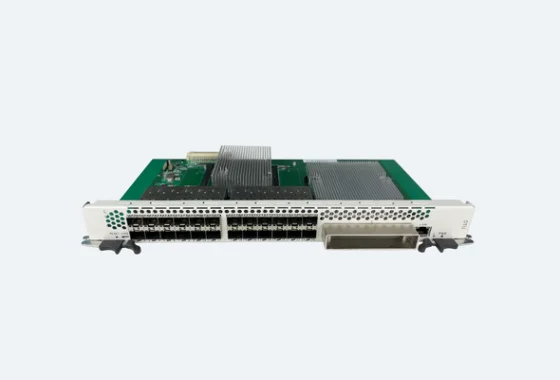In the ever-expanding landscape of data communication, the need for higher bandwidth, improved efficiency, and robust transmission capabilities has never been greater. Data centers, service providers, and enterprises are all striving to keep up with the escalating demand for faster, more reliable connections. One key technology that has been instrumental in achieving this is the 100G CFP muxponder. This advanced optical transponder plays a pivotal role in enhancing data transmission by multiplexing multiple lower-speed signals into a single high-speed 100G channel, significantly optimizing the performance and capacity of modern networks. In this article, WDMLight will explore the real-world applications of the 100G CFP muxponder, demonstrating why it is an essential component in today's high-speed optical communication systems.
What is the 100G CFP Muxponder?

A muxponder is a device that combines (or "multiplexes") multiple lower-speed data streams into a higher-speed optical signal for transmission over a single optical fiber. It achieves this by utilizing Wavelength-Division Multiplexing (WDM), a technology that allows different wavelengths of light to carry different data streams, thereby maximizing the capacity of the fiber.The 100G CFP muxponder is a specific type of muxponder that operates at 100 gigabits per second (100G) and utilizes the CFP (C Form-factor Pluggable) transceiver form factor. CFP is a hot-pluggable optical module standard used for 100G, 40G, and other high-speed network interfaces. The CFP form factor is designed to support both short-reach and long-reach connections, making it highly adaptable for various networking environments, including data centers, carrier networks, and enterprise-level infrastructures.At its core, the 100G CFP muxponder aggregates several lower-rate signals, such as 10G or 25G, and consolidates them into a single 100G signal. This functionality is particularly beneficial in dense data environments where multiple streams of traffic need to be transmitted over long distances while maintaining efficiency and performance. The muxponder serves as a cost-effective solution by reducing the number of required optical fibers, increasing bandwidth utilization, and simplifying network management.
Real-World Applications of the 100G CFP Muxponder
The 100G CFP muxponder is widely used across various industries, each with its own specific requirements for high-speed data transmission. Below are some of the key applications where the 100G CFP muxponder plays a critical role.
1. Data Center Interconnect (DCI)
Data centers are the backbone of modern digital services, and ensuring seamless connectivity between them is critical for applications such as cloud computing, big data analytics, and disaster recovery. The 100G CFP muxponder enables high-speed, low-latency connections between data centers, allowing organizations to move large volumes of data efficiently and reliably.By multiplexing multiple data streams into a single 100G channel, the muxponder minimizes the number of fibers required to connect data centers, reducing both infrastructure costs and complexity. This makes it an ideal solution for data center interconnect (DCI) applications, where bandwidth demands are constantly increasing.
2. Telecommunications Networks
Telecommunications providers are constantly seeking ways to optimize their network infrastructure to meet the growing demand for high-speed internet, video streaming, and mobile data services. The 100G CFP muxponder allows telecom operators to efficiently aggregate traffic from multiple sources and transmit it over long distances using existing fiber infrastructure.By reducing the need for additional fiber deployment, the muxponder helps telecom providers minimize operational costs while still offering high-capacity services to their customers. This makes the 100G CFP muxponder an essential component in modern telecommunications networks, particularly for long-haul and metro applications.
3. Financial Services
In the financial sector, low-latency, high-speed connections are essential for activities such as high-frequency trading, real-time analytics, and secure data transmission. The 100G CFP muxponder provides the high-speed connectivity required to support these mission-critical applications, ensuring that financial institutions can operate with maximum efficiency and security.By aggregating multiple data streams into a single high-speed channel, the muxponder reduces the number of connections that need to be managed, simplifying network operations and improving overall reliability.
The 100G CFP muxponder is a powerful and versatile solution for high-speed optical communication. Its ability to aggregate multiple data streams into a single 100G signal makes it an essential component for organizations looking to maximize the efficiency of their networks. With benefits such as high bandwidth efficiency, cost-effective scalability, long-distance transmission optimization, and simplified network management, the 100G CFP muxponder is a critical tool for data centers, telecommunications providers, and enterprises alike. As the demand for faster, more reliable connections continues to grow, the 100G CFP muxponder will remain at the forefront of modern networking solutions, enabling organizations to meet the challenges of today's data-driven world.
https://www.wdmlight.com/Maximizing-Data-Center-Efficiency-Exploring-the-100G-CFP-Muxponder.html
https://www.wdmlight.com/100G-OTN-Muxponder.html
www.wdmlight.com
WDMLight

